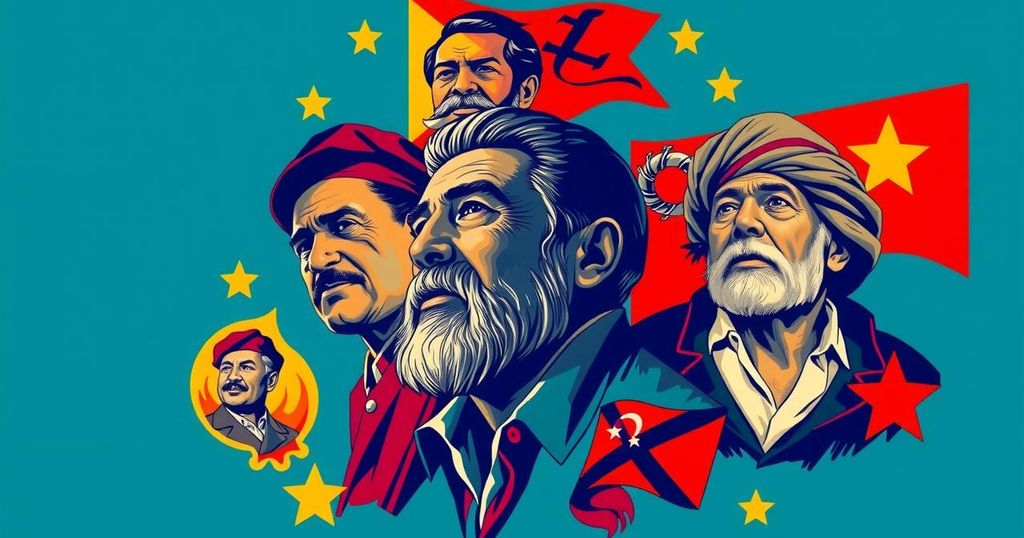Cuba’s shift towards socialism under Fidel Castro drew the nation into dependency on the Soviet Union, triggering widespread emigration and internal discord. Key incidents such as the Cuban missile crisis heightened tensions with the United States. Economic struggles persisted as the government nationalized businesses and adopted central planning, while attempts to export revolution abroad further isolated Cuba. Relations with the U.S. remain strained, compounded by the enduring effects of the trade embargo and ongoing migration issues.
Cuba’s progression towards socialism was marked by increasing reliance on the Soviet Union, which led to significant internal divisions among its leadership and populace. This shift prompted substantial emigration from Cuba, with hundreds of thousands of skilled workers and affluent individuals relocating primarily to the United States, particularly Miami, as well as to Spain and other countries. In the early days of Fidel Castro’s rule, Soviet economic and military support was vital, yet it also provoked opposition from the United States. A pinnacle event occurred during the Cuban missile crisis in October 1962, when the Soviet Union established missile bases in Cuba and sparked a global conflict. The United States reacted with a naval blockade and a demand for the removal of missiles, pushing the world to the brink of war. Cuba subsequently experienced deep-seated shortages of essential goods, leading to a second agrarian reform in the mid-1960s that further entrenched its dependence on sugarcane while abandoning attempts to diversify its economy. During this period, Cuba also attempted to export revolution, as evidenced by its organization of a meeting of Latin American communists in 1964 and its involvement in the Dominican civil war in 1965, which precipitated U.S. military intervention. Meanwhile, Che Guevara pursued revolutionary activities abroad, notably in Congo (Kinshasa) and Bolivia, where he was eventually killed in 1967, alienating many Latin American nations in the process. In response to ongoing economic challenges, the Cuban government intensified its campaign against private property in the late 1960s, nationalizing hundreds of small businesses. Military leaders increasingly occupied critical government, industrial, and Communist Party roles. When initial attempts to incentivize production through nonmonetary awards failed, the regime reverted to central planning akin to Soviet models. A new constitution and electoral code were instituted in 1976, consolidating Fidel Castro’s powers as president of both the Council of Ministers and the Council of State. The material conditions within Cuba showed modest improvement throughout the 1970s, yielding reductions in shortages and better diplomatic relations with burgeoning nations. However, support for the Soviet invasion of Afghanistan in 1979 eroded Cuba’s standing among nonaligned countries. U.S. concerns over Soviet troops stationed in Cuba added to tensions, notably reflected in the U.S. invasion of Grenada in 1983, which resulted in casualties and the expulsion of Cuban military personnel from the island. Despite some thawing of relations between Cuba and the U.S. since the revolution, the trade embargo instituted in the early 1960s continues to be largely upheld. U.S. actions, such as military interventions and criticism regarding human rights abuses in Cuba, have perpetuated antagonism. The Mariel boatlift in 1980 saw approximately 125,000 Cubans flee to the United States, and by 1987, an agreement allowed for the annual emigration of 20,000 Cubans to the U.S. Still, significant illegal migration persisted. Soviet assistance in the form of financial aid, military supplies, and technical support played a pivotal role in Cuba’s economy, comprising a substantial portion of its annual budget. The USSR purchased most of Cuba’s sugar crop at inflated prices, which sustained the Cuban economy. However, as the Soviet Union began to liberalize its policies during the late 1980s, the relationship began to deteriorate, yet the Cuban leadership remained steadfast in its approach to socio-economic policies.
The article examines Cuba’s complex political and economic trajectory under Fidel Castro’s leadership, particularly following the 1959 revolution. It explores the nation’s alignment with the Soviet Union and the implications of this relationship, including the domestic ramifications of socialism and the exportation of revolutionary ideologies to Latin America. The piece provides insight into the social and economic challenges that plagued Cuba during various historical moments, particularly highlighting events such as the Cuban missile crisis and Cuba’s military involvements abroad. It further discusses the persistence of the U.S. embargo and the significant impact of emigration on the island’s demographic and economic conditions.
In summary, Cuba’s journey towards socialism under Fidel Castro was marred by internal strife, reliance on Soviet support, and profound economic challenges. Key historical events, such as the Cuban missile crisis and military interventions in foreign conflicts, significantly influenced both Cuba’s international standing and domestic policies. Although there have been attempts to improve relations with the United States since the revolution, the overarching legacy of the trade embargo continues to resonate within Cuba’s socio-economic landscape, fostering a climate of emigration and internal discord.
Original Source: www.britannica.com







